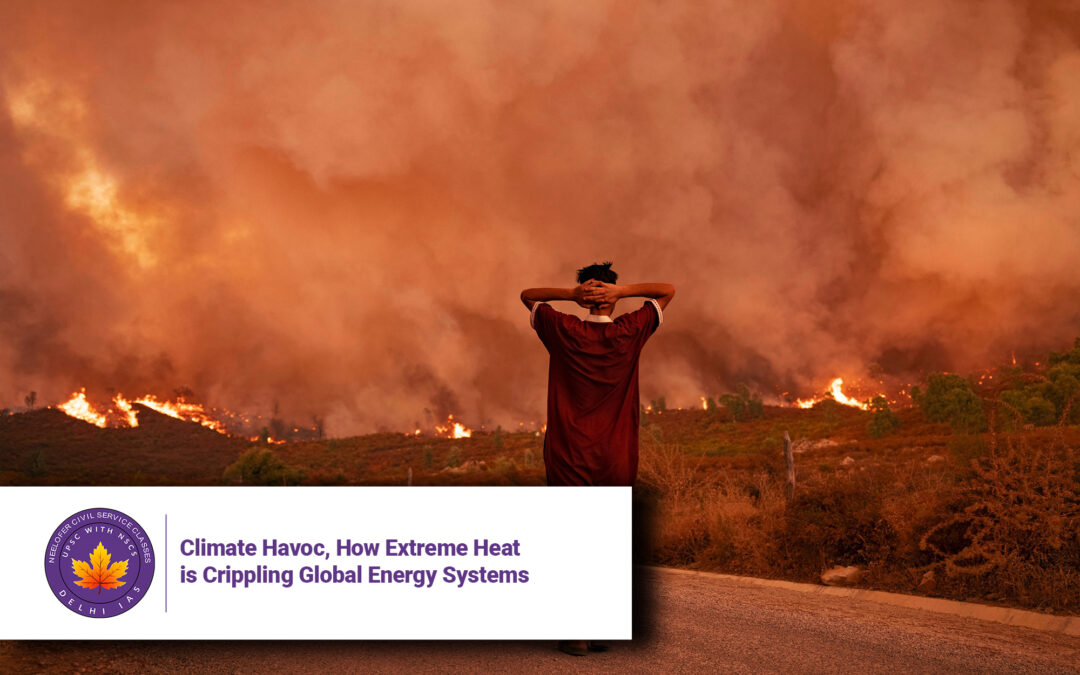Climate Havoc, How Extreme Heat is Crippling Global Energy Systems
Introduction
Climate change is no longer a distant threat—it is actively disrupting critical infrastructure worldwide in unexpected ways. From jellyfish swarms shutting down nuclear plants to overheated generators failing during heatwaves, our energy systems are increasingly vulnerable to rising temperatures. This article explores how extreme heat is destabilizing power grids, the cascading effects on industries and daily life, and potential solutions to build climate-resilient energy infrastructure.
The Unpredictable Threats to Energy Infrastructure
1. Jellyfish Swarms and Overheated Reactors
In a bizarre but telling incident, two French nuclear reactors were forced to shut down when swarms of jellyfish—linked to unusually warm waters—clogged cooling systems. This is not an isolated event:
-
Nuclear plants rely on cold water for cooling, but warmer rivers (e.g., the Rhône and Garonne) reduce efficiency, forcing output cuts.
-
Similar disruptions have occurred in Sweden and Japan, where marine life and algae blooms have damaged coastal power plants.
2. Heatwaves and Grid Failures
During extreme heat, power demand soars as millions crank up air conditioners, but the grid itself becomes less reliable:
-
Iraq (2023): A pilgrimage to Karbala coincided with 40°C+ temperatures, collapsing the grid as cooling demand spiked.
-
Cincinnati Open (2023): An on-site generator overheated, halting play and highlighting the fragility of backup systems.
3. The “Heat Penalty” on Power Plants
Thermal power plants (coal, gas, nuclear) lose efficiency as temperatures rise:
-
Coal plants face a 3.2% higher risk of forced outages during heatwaves (Sweden/Italy study).
-
Gas plants lose ~21% output when temperatures jump from 25°C to 50°C (Iraqi research).
-
Nuclear plants must reduce output or shut down if cooling water exceeds safety thresholds.
Droughts and the Water-Energy Collision
1. Water Shortages Paralyze Power Generation
-
India: Lost 19 days’ worth of coal power since 2014 due to water shortages (Reuters).
-
Global Trend: 60% of the world faces water stress, worsening cooling challenges for thermal plants.
2. The Vicious Cycle
-
More Heat → More Cooling Demand → More Water Use → Less Water Available.
-
Example: Australia’s 2019 drought forced power plants to truck in water, raising costs and emissions.
Renewable Energy: A Partial Solution
1. Solar and Battery Resilience
-
Solar panels and lithium-ion batteries outperform thermal plants in heatwaves but face their own challenges:
-
Solar efficiency drops ~0.5% per °C above 25°C.
-
Batteries degrade faster in extreme heat.
-
2. Wind Energy’s Heatwave Paradox
-
Declines by 30–50% in Australia, Siberia, and Europe during heatwaves due to stagnant air.
-
Increases in some regions (e.g., northern US, East Africa) due to shifting wind patterns.
The Hidden Stress on Infrastructure
1. Overloaded Transmission Lines
-
Transformers and cables overheat as demand spikes, increasing failure risks.
-
Example: California’s 2020 blackouts during a record heatwave.
2. Data Centers: The Silent Energy Hogs
-
A third of data center electricity goes to cooling, worsening during heatwaves.
-
London Hospitals (2022): Server failures during a heatwave disrupted medical IT systems.
Long-Term Risks and Solutions
1. The Fossil Fuel Legacy
-
Industrial infrastructure was built for a cooler climate. Decarbonization alone won’t fix its heat vulnerability.
2. Adaptive Measures
-
Grid Modernization: Invest in heat-resistant materials and distributed energy systems.
-
Water-Free Cooling: Explore dry cooling or recycled wastewater for power plants.
-
Policy Shifts: Mandate climate resilience in energy planning (e.g., California’s 2023 heat-ready grid rules).
Conclusion
The energy sector’s struggle with extreme heat underscores a harsh reality: climate change is here, and our infrastructure is unprepared. From jellyfish invasions to melting transmission lines, the threats are diverse and escalating. While renewables offer hope, systemic upgrades and proactive policies are urgent to avoid a future of blackouts and economic chaos.
5 Q&A
Q1: How do jellyfish disrupt nuclear power plants?
A1: Swarms clog cooling water intakes, forcing shutdowns. Warmer oceans increase jellyfish populations, making this a growing risk.
Q2: Why do heatwaves reduce power plant efficiency?
A2: Thermal plants need cold water/air to cool themselves. Hotter environments reduce their ability to dissipate waste heat, lowering output.
Q3: Can renewable energy fully replace fossil fuels during heatwaves?
A3: Not yet. Solar and wind are more resilient but still face heat-related efficiency drops. Energy storage and grid flexibility are critical.
Q4: How do data centers contribute to energy stress?
A4: Their cooling demands spike during heatwaves, straining grids. AI and cryptocurrency expansion will worsen this trend.
Q5: What’s one policy solution to improve grid resilience?
A5: Governments could mandate “heat-ready” infrastructure standards, like heat-resistant transformers and water-efficient cooling tech.







